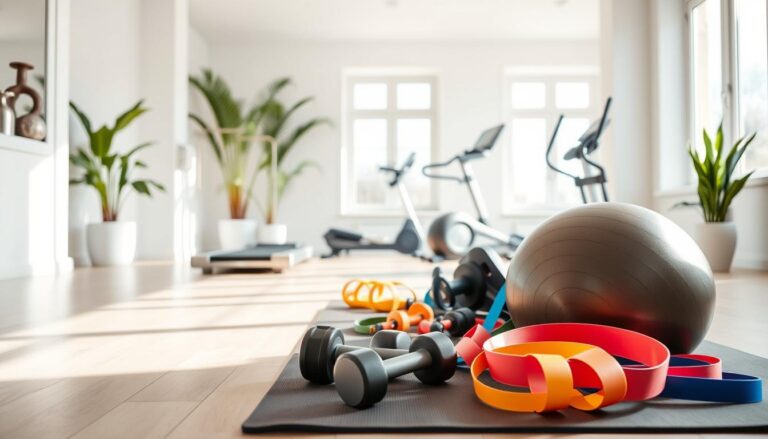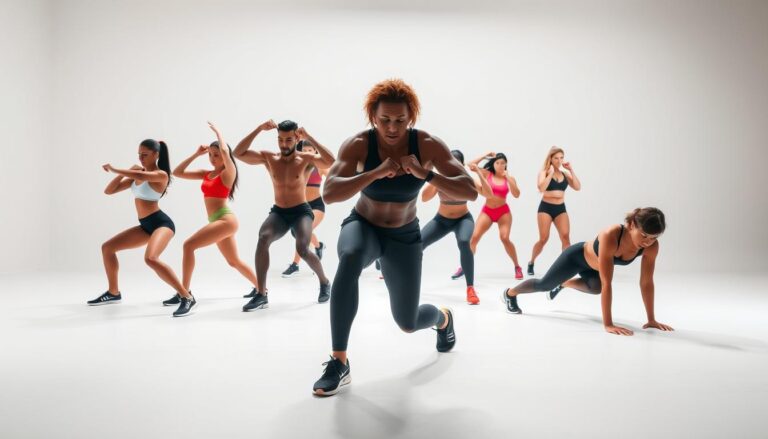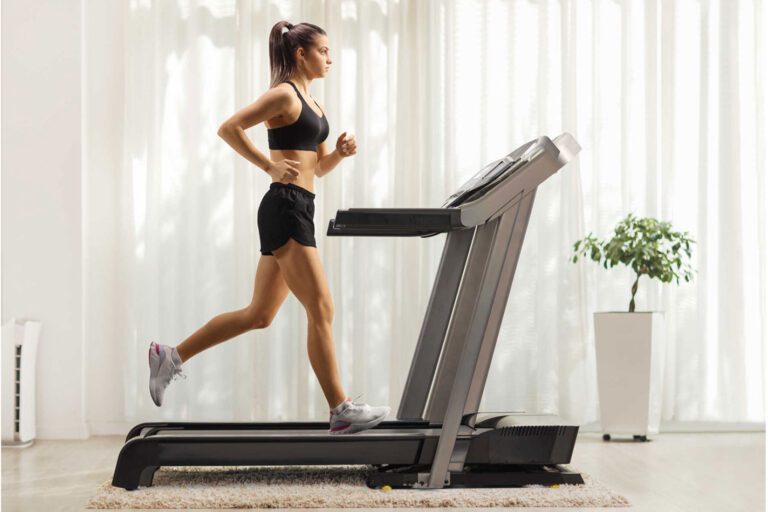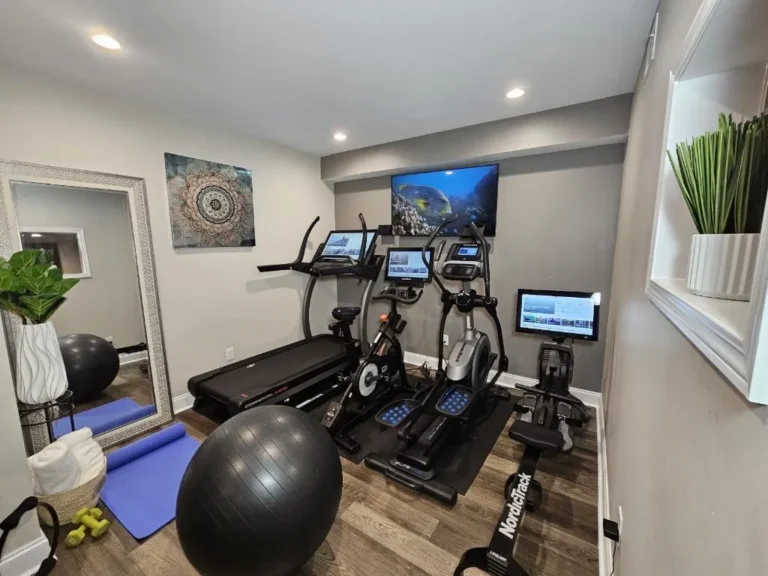Top Exercises for Better Balance: What Works Best
Maintaining good balance is essential for daily activities and overall health. It helps prevent falls, which send over 3 million seniors to emergency rooms each year, according to the CDC. Simple, targeted movements can reduce fall risk by 13-40%, as shown in the Journal of the American Geriatrics Society.
These exercises are designed for all fitness levels. They require no equipment and fit easily into busy schedules. Whether you’re new to fitness or looking to enhance your routine, these home-friendly options build confidence and improve mobility.
This guide will take you from basic techniques to more advanced moves, ensuring steady progress. Pair these routines with flexibility and strength exercises for even greater benefits. Start today and take a step toward better stability and independence.
Key Takeaways
- Balance is crucial for preventing falls and maintaining independence.
- Targeted exercises can reduce fall risk by 13-40%.
- No equipment is needed, making these routines accessible for everyone.
- These movements are adaptable for beginners and advanced fitness enthusiasts.
- Pairing balance exercises with strength and flexibility routines enhances overall health.
Why Balance Matters for Your Health and Mobility
Strong balance is a cornerstone of daily life and long-term health. It helps prevent falls, which account for over 3 million emergency room visits annually, according to the CDC. These incidents often lead to fractures, reducing independence and increasing healthcare costs.
Weakened core and leg muscles heighten fall risk over time. Simple activities like climbing stairs, carrying groceries, or bending become challenging. Physical therapists recommend targeted movements to reduce fall rates by 13-40%, ensuring safer mobility.
Fear of falling can also impact mental well-being, discouraging physical activity. This creates a cycle of reduced movement and increased vulnerability. Investing just 20 minutes twice weekly in balance training can prevent costly medical bills, averaging $35,000 per fall injury.
Here’s a quick comparison of the benefits of balance training versus the risks of neglect:
| Balance Training | Neglecting Balance |
|---|---|
| Reduces fall risk by 13-40% | Increases likelihood of falls |
| Improves mobility and independence | Leads to reduced activity levels |
| Prevents costly injuries | Results in high medical expenses |
By prioritizing balance, you safeguard your health, maintain independence, and enjoy a more active lifestyle. Start small, stay consistent, and reap the long-term benefits.
What Is the Best Exercise to Improve Your Balance?
Stability training doesn’t have to be complicated. Simple movements can make a big difference. Focus on these three exercises to enhance your steadiness and confidence.
One-Leg Stand
Start by standing near a wall for support. Lift one leg and hold for 5-10 seconds. Repeat three times on each side. Keep your hips aligned and avoid locking your knees.
Gradually reduce reliance on the wall over 4-6 weeks. This movement mimics recovering from sudden pushes or slips, improving functional stability.
Heel-to-Toe Walk
Imagine walking on a tightrope. Place one foot directly in front of the other, heel to toes. Take 5+ steps initially, using a wall or chair for support if needed.
This exercise enhances dynamic balance, making everyday movements safer and more controlled.
Sideways Walking
Take 10 controlled steps to each side, keeping your hips level. Imagine sliding between kitchen counters. This movement strengthens lateral stability, crucial for navigating tight spaces.
Avoid holding your breath or rushing through the steps. Consistency is key to progress.
These routines are adaptable for all fitness levels. Start small, stay consistent, and enjoy the benefits of improved stability.
Simple Balance Exercises You Can Do at Home
Building better balance doesn’t require a gym membership. With a few easy movements, you can enhance your stability right at home. These routines are designed to fit seamlessly into your day, requiring minimal space and no equipment.

Step-Up
Start with a step-up using a sturdy stair or low platform. Place one foot firmly on the step and push through your heel to lift your body. Slowly lower back down, engaging your glutes for control. Perform 5 slow reps per leg.
This movement strengthens your lower body while improving stability. Use a railing for support if needed, especially when starting out.
Simple Grapevine
The grapevine is a fun way to boost lateral stability. Step to the side with one foot, then cross the other behind it. Repeat for 5 cross-steps per side, touching a wall for balance if necessary.
Imagine balancing a book on your head to maintain proper posture. This exercise is excellent for navigating tight spaces and avoiding sideways falls.
Standing 3-Way Kicks
Challenge your balance with 3-way kicks. Stand tall and lift one leg to the front, side, and back. Perform 5 reps on each side, keeping your hips level throughout the movement.
This exercise mimics real-life movements, like reaching for high shelves. It’s a great way to improve multidirectional stability.
| Exercise | Benefits |
|---|---|
| Step-Up | Strengthens legs and glutes |
| Simple Grapevine | Boosts lateral stability |
| Standing 3-Way Kicks | Improves multidirectional balance |
For added safety, place a folded towel under chair legs to prevent sliding. Use household items like a bottom stair step or sturdy ottoman for support. Once you’ve mastered these moves, consider adding 1 lb ankle weights for an extra challenge.
Advanced Balance Exercises for Greater Stability
Taking your stability to the next level requires focused movements and consistency. These advanced routines build strength, enhance coordination, and reduce fall risk. Whether you’re aiming for better posture or stronger muscles, these exercises are designed to challenge your body safely.
Tai Chi Movements
Tai Chi is a gentle yet powerful way to boost stability. Its slow, flowing motions, like the wave hands movement, improve reflexive control. According to the Journal of the American Geriatrics Society, Tai Chi reduces falls by enhancing weight shifts and coordination.
Start with basic forms and gradually increase complexity. Focus on maintaining a steady posture and controlled breathing. This practice not only strengthens your core but also promotes mental calmness.
Yoga and Pilates for Core Strength
Yoga and Pilates are excellent for building core strength and balance. Poses like the tree pose challenge single-leg endurance, while Pilates movements engage deep muscles for better alignment.
Certified instructors can ensure proper form, reducing injury risk. Avoid head-below-heart poses if you’re prone to dizziness. These practices enhance flexibility, stability, and overall quality life.
Squats and Calf Raises
Squats and calf raises are simple yet effective for lower body strength. When performing squats, hinge at the hips and keep knees behind toes. This protects your back while targeting key muscles.
For calf raises, aim for 10-15 reps with chair support. Strong calves prevent tripping on uneven surfaces, improving real-world stability. As you progress, try balance discs or foam pads for added challenge.
“Strong calves and a stable core are essential for navigating daily life with confidence.”
These advanced exercises are adaptable for all fitness levels. Start slow, stay consistent, and enjoy the benefits of greater stability and independence.
Balance Exercises for Seniors: Reducing Fall Risk
For seniors, maintaining stability is key to staying active and independent. Simple movements can significantly lower fall risk and enhance confidence in daily activities. These exercises are designed to be safe, effective, and easy to incorporate into your routine.
Sit to Stand and Stand to Sit
This movement strengthens your legs and improves overall stability. Start by sitting in a sturdy chair with your feet flat on the floor. Push through your thighs to stand up, avoiding the use of your arms for support. Lower yourself back down slowly, engaging your core muscles.
For added comfort, use a firm seat cushion. This exercise mimics real-life movements, like getting out of bed or rising from a dining chair. Consistent practice can restore independence in daily tasks.
Heel-to-Toe Standing or Walking
This exercise enhances your ability to navigate crowded spaces. Begin by standing with one heel directly in front of the other toe. Hold this position for 30 seconds, gradually increasing the duration as your stability improves.
Once comfortable, progress to walking in a straight line. This movement trains your body to maintain a narrow base gait, which is essential for avoiding trips and falls.
1-Leg Stand with Daily Tasks
Incorporate balance training into your routine by standing on one leg while performing daily tasks. For example, try brushing your teeth or chatting on the phone while balancing. This builds stability in a functional and practical way.
Use a wall or counter for support if needed. Over time, you’ll notice improved confidence in your movements and reduced fear of falling.
“60% of seniors regain stair-climbing ability with just 6 weeks of consistent practice.”
- Choose armless chairs to engage your core muscles more effectively.
- Remove throw rugs in practice areas to ensure safety.
- Track your progress using a smartphone stopwatch for motivation.
By incorporating these exercises into your routine, you can reduce injuries and maintain an active lifestyle. Start small, stay consistent, and enjoy the benefits of improved stability.
Incorporating Balance Training into Your Daily Routine
Enhancing stability can seamlessly fit into your day. With a few creative strategies, you can make balance training a natural part of your daily routine. Whether you’re multitasking or setting aside dedicated time, these tips ensure steady progress.
Using Household Items for Support
You don’t need fancy equipment to improve stability. Everyday household items like walls, counters, and chairs can provide excellent support. For example, try sideways walking along a kitchen counter or using a chair for sit-to-stand movements.
Resistance bands placed above your ankles during sidestepping can add extra challenge. These simple hacks make it easy to integrate balance exercises into your life without disrupting your schedule.
Combining Balance Exercises with Other Workouts
Pairing balance training with other workouts maximizes efficiency. Add standing 3-way kicks during TV ads or heel raises while waiting for coffee. This way, you’re multitasking and making the most of your time.
Physical therapists recommend adding two balance exercises to your existing walks. This combination strengthens your core and muscles while enhancing overall stability.
Setting Realistic Goals and Tracking Progress
Start with achievable goals, like holding a wall-assisted stand for 10 seconds. Gradually increase to 30 seconds freestanding. Tracking your progress keeps you motivated and ensures steady improvement.
Use fitness apps like Balance Trainer Pro to monitor your movement and set reminders. Notice small wins, like easier transitions from the floor to standing, as markers of your success.
“Consistency is key. Small, daily efforts lead to significant long-term results.”
- Habit stacking: Pair balance moves with your morning meds routine.
- Kitchen hack: Do heel raises while waiting for coffee.
- Progress markers: Notice easier transitions from floor to standing.
Conclusion
Improving stability doesn’t have to be overwhelming. Focus on simple yet effective exercises like the 1-Leg Stand, Heel-to-Toe Walk, and Tai Chi. These movements enhance balance and reduce falls prevention risks, making daily activities safer and more enjoyable.
For personalized guidance, consider consulting a physical therapist. Most people notice improvements in 4-8 weeks with consistent practice. Better stability means more gardening, playing with grandkids, and traveling with confidence.
Bookmark this guide and revisit your progress monthly. Use resources like the FindAPT.org directory for expert evaluations. Every step you take today builds a steadier, healthier tomorrow.






